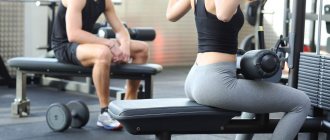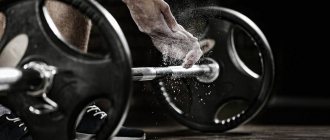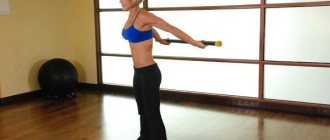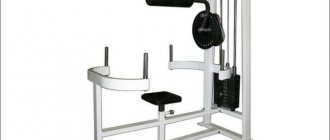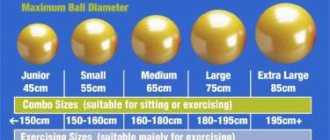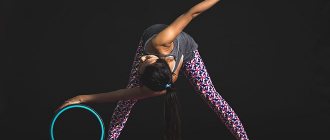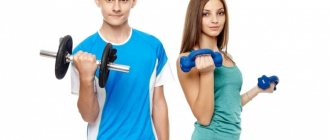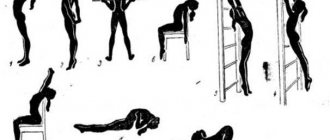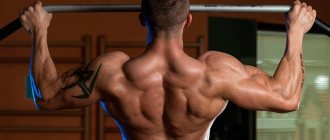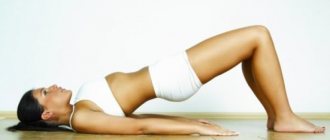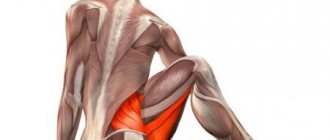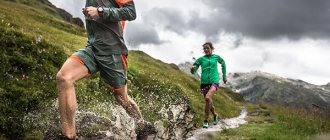No one will argue with the fact that physical exercise is extremely beneficial for people of different sexes and all age categories. Gymnastics for posture are quite popular, especially when it comes to the need to correct it in children. It is worth noting that gymnastics and exercises for posture include such simple complexes that absolutely anyone can cope with such exercises. It’s worth talking a little closer about the benefits of physical activity of this type and specific loads.
“Keep your back straight!”
The process of developing posture should begin from early childhood. Even babies begin to receive massage at home to strengthen their back muscles. In addition, for the same purpose, children are recommended to swim from the first months of life. In the future, parents should monitor the correct position of the baby’s body during feeding, sleeping, and playing.
The well-known phrase “straight back” is actually not true in everything. If we talk about healthy, correct and beautiful posture, it still involves bending: in the cervical and lumbar regions, a forward bend (lordosis), and in the thoracic and pelvic regions, a backward bend (kyphosis). When the back does not have such curves, this indicates severe postural problems.
Preventative measures for curvature of the spine can include competent organization of children's play and work places, a fairly rigid orthopedic mattress, sports and special health-improving gymnastics.
Consequences of spinal curvature
It should be noted that poor posture can have quite serious consequences for the physical and psychological health of children. These include the following:
- prolapse of internal organs, and because of this - disturbances in their functioning, the occurrence of various diseases;
- decreased lung volume, which may cause shortness of breath and the child will get tired faster;
- back pain, as it is difficult for muscles and joints to cope with the extra load;
- problems with remembering due to the fact that the blood is not sufficiently saturated with oxygen. This may cause headaches and increase body fatigue;
- low self-esteem, dissatisfaction with oneself, rejection of one’s physical self.
Consequently, problems due to incorrect posture are quite serious in their consequences for the growing body. The good news is that an extensive exercise program has been developed to correct such problems.
Beneficial properties of therapeutic exercises
Physiotherapy exercises play a leading role in the therapy and rehabilitation of patients with pathologies of the spinal column (especially in the initial stages of disease development). Why?
The formation of the osseous-ligamentous apparatus of the child’s spine directly depends on the state of his muscular system and how effectively it performs the function of maintaining the spine in the position provided by nature. Exercise therapy hardens and develops muscles so that they can hold the spine in a position as close as possible to physiological (maximum correction).
Therapeutic exercise (physical therapy):
- is capable of providing a general health-improving and restorative effect - normalizes the activity of all body systems, increases the immune response, stabilizes the course of nervous processes;
- activates metabolic reactions (general and local);
- improves motor skills and coordination of movements, increases overall physical endurance;
- strengthens the muscles of the back, abs, torso (muscle corset), as well as the muscles of the arms, legs, neck, etc.;
- eliminates imbalances that arise from uneven or insufficient development and stretching of muscles and ligaments;
- relieves the increased load on the spinal column due to this;
- corrects posture - curvatures (scoliosis, lordosis, kyphosis) of the spinal column.
An obligatory component of functional therapy for postural disorders in children is massage. It is recommended as an addition to physical therapy as part of a set of measures to straighten curvatures.
Exercise therapy and massage (general and special) in combination significantly increase the effectiveness of therapy and help improve the general physical condition of the child.
Measures to prevent posture problems
Modern medicine recommends the following means aimed at correcting children’s posture:
- Wearing a special corset with magnetic inserts. It is important to choose the right size here. It is advisable to make such a purchase in specialized orthopedic salons or stores. The corset supports the back and does not allow it to bend, and therefore the child learns to sit and stand straight.
- Physiotherapy. It includes special exercises that are first carried out by the doctor with the child, and then parents can organize them for their children.
- Sport. Swimming, yoga, horseback riding and gymnastics are especially beneficial for the back. But it is important not to overload the baby with physical activity; it must be correct and feasible. Sometimes morning exercises can be a substitute for sports.
- Massage (manual therapy). These procedures are aimed at relaxing muscles, removing toxins from them, and improving blood circulation.
- Operation. It is indicated in extreme and advanced cases.
In any case, it has been proven that posture problems can be corrected even at home.
Main features of exercise therapy
To correct back curvatures in children, the use of physical therapy (PT) is possible only after a thorough diagnosis of the child’s condition. This helps the doctor choose the optimal gymnastics complex in each individual case.
There are general principles that must be followed when performing gymnastic exercises:
- Clothing should not restrict movement or put pressure on organs;
- Long-term gymnastics makes breathing difficult for children, so it should be combined with a set of breathing exercises;
- Physical activity should be increased gradually and starting with easier activities;
- During charging, it is necessary to monitor your pulse. It reflects the activity of the cardiovascular system and allows us to predict the degree of its “load”;
- You cannot make sudden movements so as not to form microcracks and tears in the muscles and ligaments;
- The maximum range of movements is permissible only after prolonged “swinging”.
Contraindications to therapeutic exercises for children
If posture is impaired in children, therapeutic exercises are not performed if there are contraindications:
- The presence of serious muscle tension with curvature of the vertical axis of the body;
- Compression syndrome (pinched nerve root), which must be treated promptly;
- Signs of impaired blood supply in the vertebrobasilar region (accumulation of vertebral and cerebral vessels);
- Severe pain syndrome.
Before the start of the lesson, the physical therapy doctor determines the amplitude of painless movements and conducts control exercises that help identify the main links of the pathological process in the child’s muscular system and joints.
The main tasks assigned to therapeutic exercises for poor posture:
- Removing increased impulses from a spasmed muscle or affected segment of the spine;
- Improving blood supply to damaged areas;
- Strengthening the affected intervertebral disc;
- Increased mobility in joints;
- Preventing the development of adhesions (contractures) between organs;
- Restoring coordination of movements and reducing pain.
Preparing for physical exercise
To improve the degree of correction of changes in the spine, a set of preparatory procedures is carried out in professional rehabilitation centers (Dikul, Bubnovsky, Bragg). The most effective of them is non-contact massage, which is carried out according to the following principles:
- Before the procedure, metal objects and jewelry are removed;
- The person lies down on a special table with his stomach, and the massage therapist runs the palm of his hand along the axis of the spine at a distance of 5-7 cm from it;
- In this case, the specialist must feel the places where muscle “plugs” accumulate;
- To eliminate them, the hand turns palm up and slowly moves towards the back of the head. If the plug cannot be removed immediately, the procedure must be repeated;
- The massage ends when there are no muscle tensions along the spine.
Non-contact massage does not cause pain to children and is well tolerated.
How to fix deficiencies
Let's look at the simplest and most accessible exercises, which are recommended not only for children, but also for adults. This type of gymnastics is first performed in one approach with five to six repetitions. Children are then targeted for three sets of ten repetitions of the exercises.
- "Book on head" This technique has long been used to correct deficiencies. They even teach waiters this way so that they don’t bend under the weight of the tray. You need to put a medium-sized book on your head, walk with it, sit, trying to hold it. Thanks to this, not only correct posture is formed, but also the neck muscles are well trained.
- "Gurney." You should lie on your stomach. Take turns raising your outstretched arms, chest, and then legs and pelvis. Such exercises will strengthen the entire spine.
- "Kitty." Get on your knees, lean on your palms. It’s good to bend your back, and then, on the contrary, arch it. For children, you can diversify this exercise with sounds. When bending, they can say: “Pur!”, and when bending: “Meow!”.
- "Boat". Lying on your stomach, you should stretch your arms forward. Then they raise their arms and legs together as far as possible, as if depicting a boat. You should stay in this position for at least 2-3 seconds. This is a good exercise not only for the back, but also for the abdominal muscles.
- "Support". You should stand against the wall and press your back against it. Hands should be located along the body. Next, they squat while maintaining support, that is, in contact with the wall. Then they return to their original position.
- "Bike". This exercise has been familiar to everyone since childhood, but it has not lost its relevance and effectiveness for correcting spinal defects to this day. You need to lie on your back, raise your legs up and make rotational movements at a calm pace, imitating a bicycle ride.
- "A ball in my stomach." Toned abdominal muscles are also important for correct posture. While sitting on a chair, you should imagine that there is a balloon in your stomach, which you try to inflate as much as possible when you inhale, and deflate when you exhale.
- "Lock". Aimed at correcting stoop, it is performed while standing. One hand is thrown behind the back, where it is connected with the second hand in a lock. You should stay in this position for about ten seconds. Then the hands change.
- "Hands-ropes." Performed while standing. Bend over so that your upper body is parallel to the floor. Then you need to stay in this position, hanging your arms, which should be relaxed and dangling like ropes. This is an important skill for correct posture, since even when bending over, a person can bend his back.
- "Hugs." When finishing exercises, you should always provide relaxing moments. If this is morning gymnastics in the gym, then you can hang on the horizontal bar for a few minutes. When the exercises are performed at home, the child can hug an adult by the neck or hang on mom or dad.
Morning exercises can also consist of such exercises, as they will help the body invigorate and feel in good shape.
Consequently, gymnastics to correct problems with posture is quite accessible to both children and adults at home. The main thing is the desire of adults to devote their time to these exercises. It should be remembered that these efforts will not be wasted, as they will strengthen not only the children’s spine, but also their health in general.
General strengthening exercises
Below is an approximate set of exercises for children 7 years old.
- Walking in place with knees raised – 30 seconds. Then the movements become more complicated: with your right hand, touch your left raised knee and vice versa.
- Standing near a wall, your feet are located 15-20 cm further from the wall. Place your hands against the wall and stretch upward, bending slightly in the thoracic region (inhale). The back is not in contact with the wall. Lower your arms, press your back against the wall, tilt your head forward and down (exhale). The exercise can be made more difficult by performing it on your toes.
- Standing, arms apart, legs shoulder-width apart. When squatting, bend to the side and touch your foot with your hand - exhale. While inhaling, return to a vertical position. Perform left and right 6-8 times. Make it more difficult: bring your feet together.
- Standing near the wall at a distance of one and a half steps. Bend to the waist, touching the walls with your outstretched arms - exhale. As you inhale, straighten up and move your arms back. 6-8 repetitions.
- Stand straight, bring your legs together. Bend your leg at the knee, clap your hands under it. Repeat for each leg 12 times. To complicate the exercise: raise your leg straight at the knee forward.
- Place stools on either side of the child. Leaning to the side, slam your hand on the seat, straighten up, clap your hands above your head. Perform 10 times left and right. Make it more difficult: bend to the side without bending your knees.
- Jumping in place, hands on the belt – 40 seconds. Make it more difficult: jump, turning your body 90 degrees to the side.
